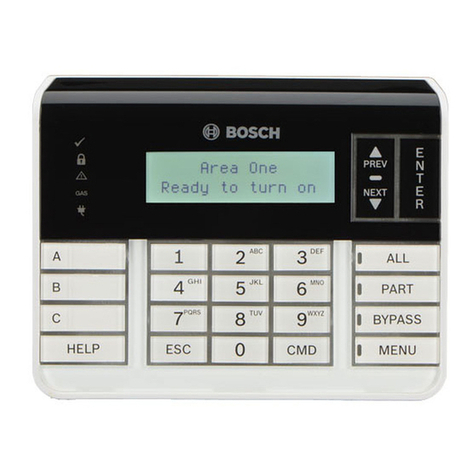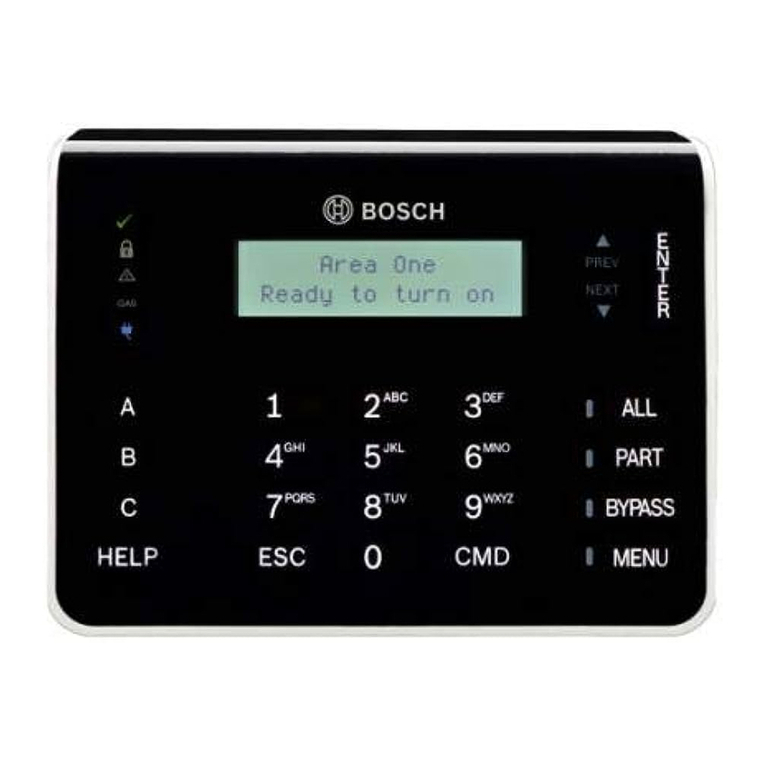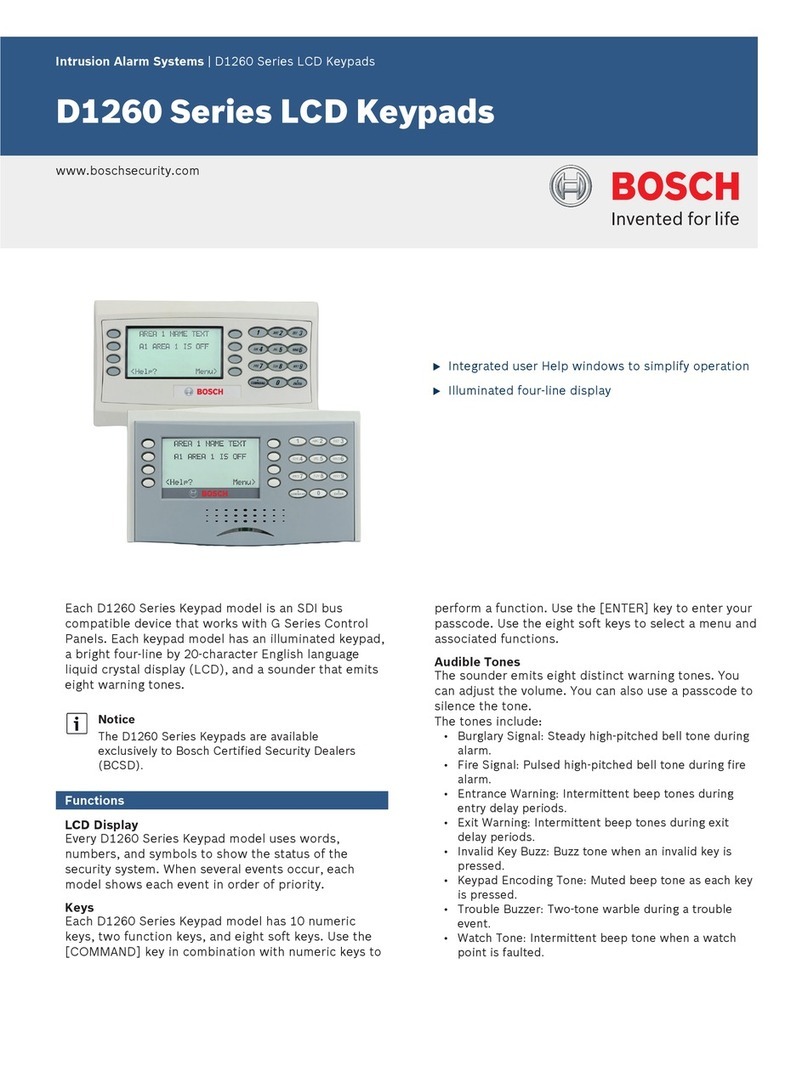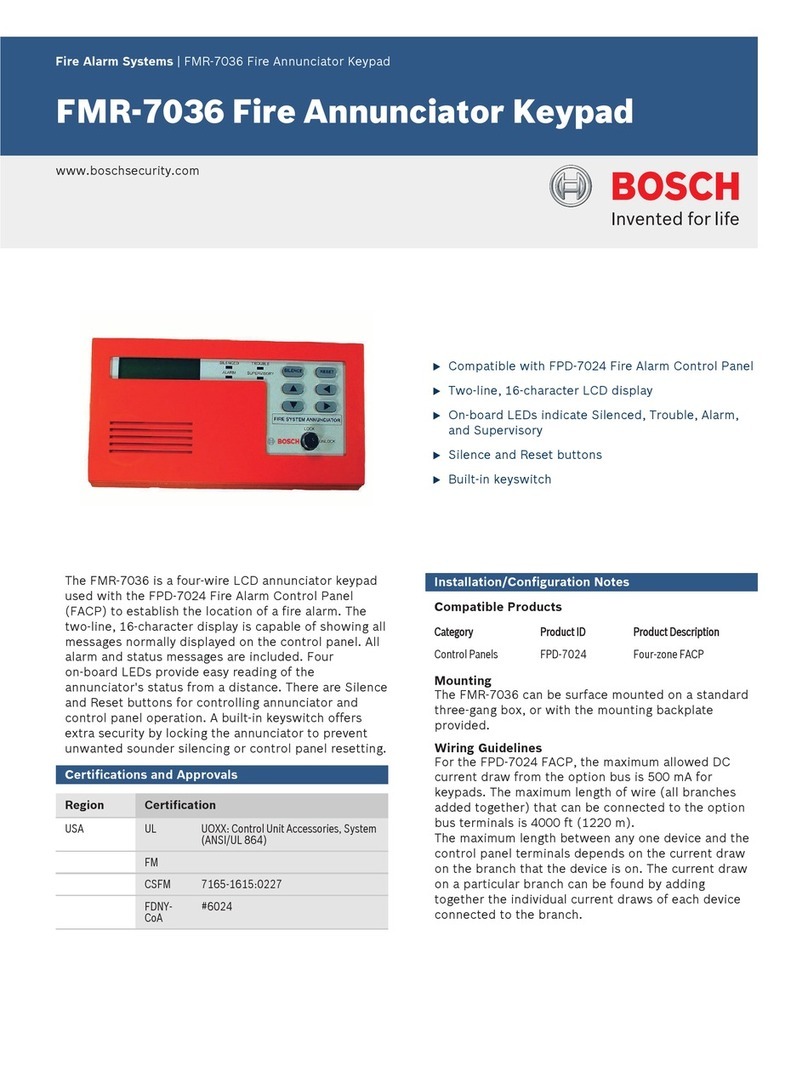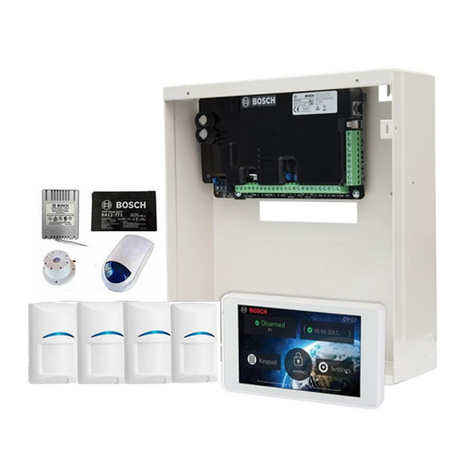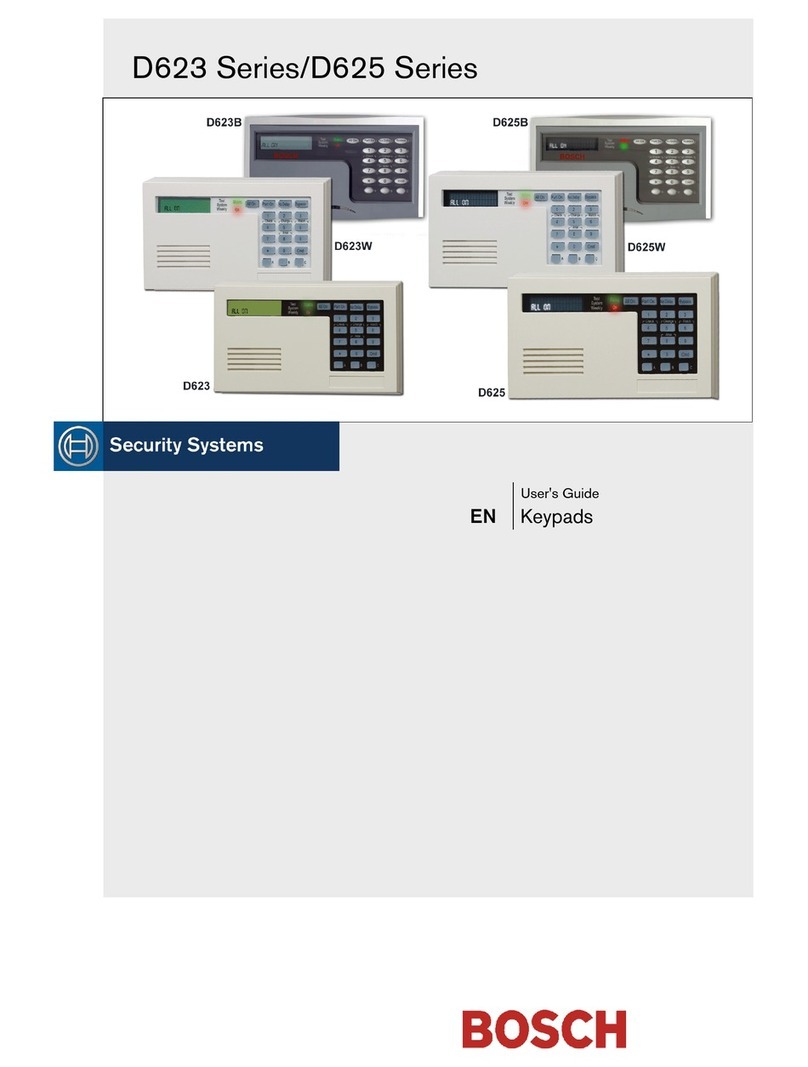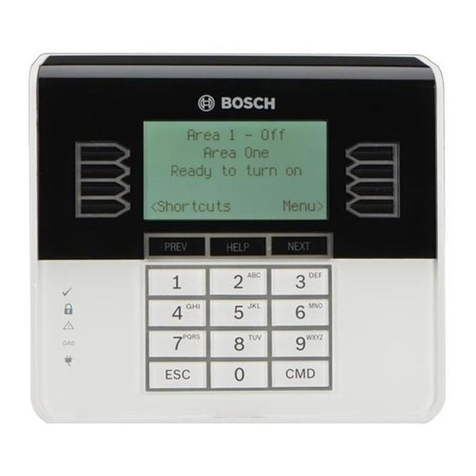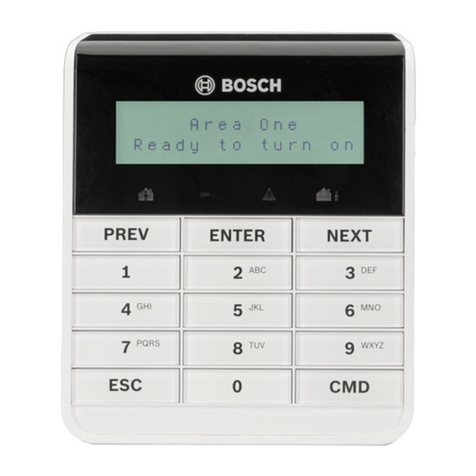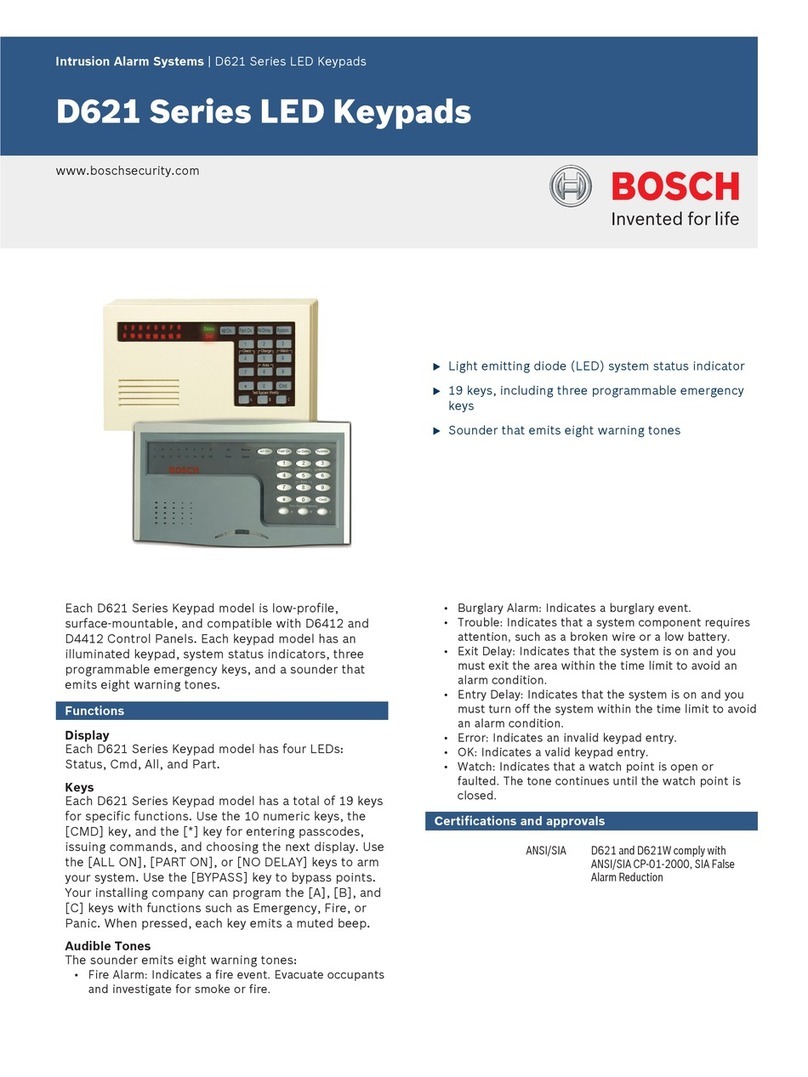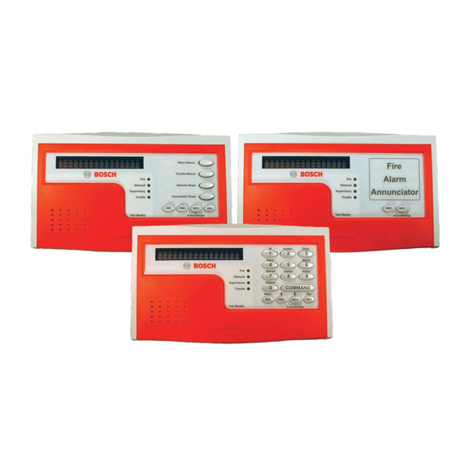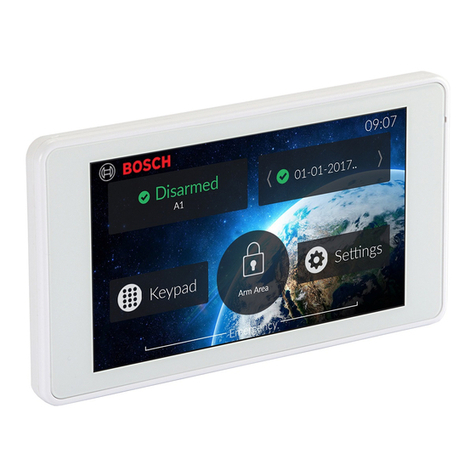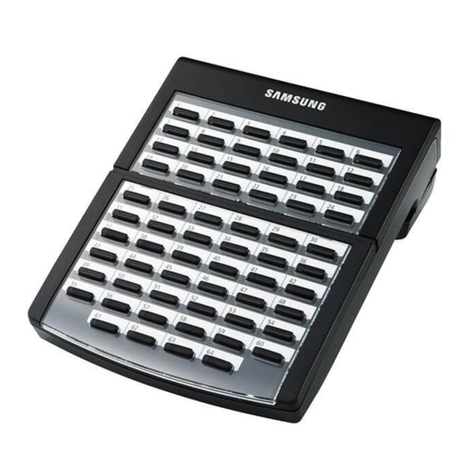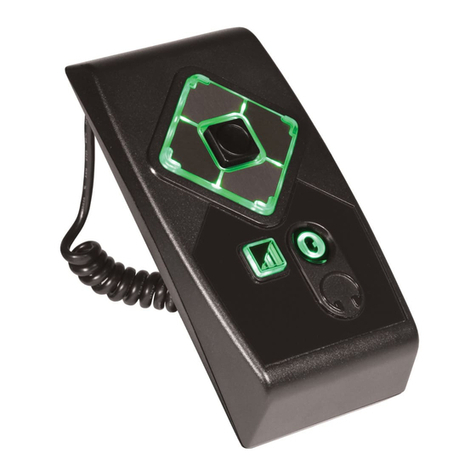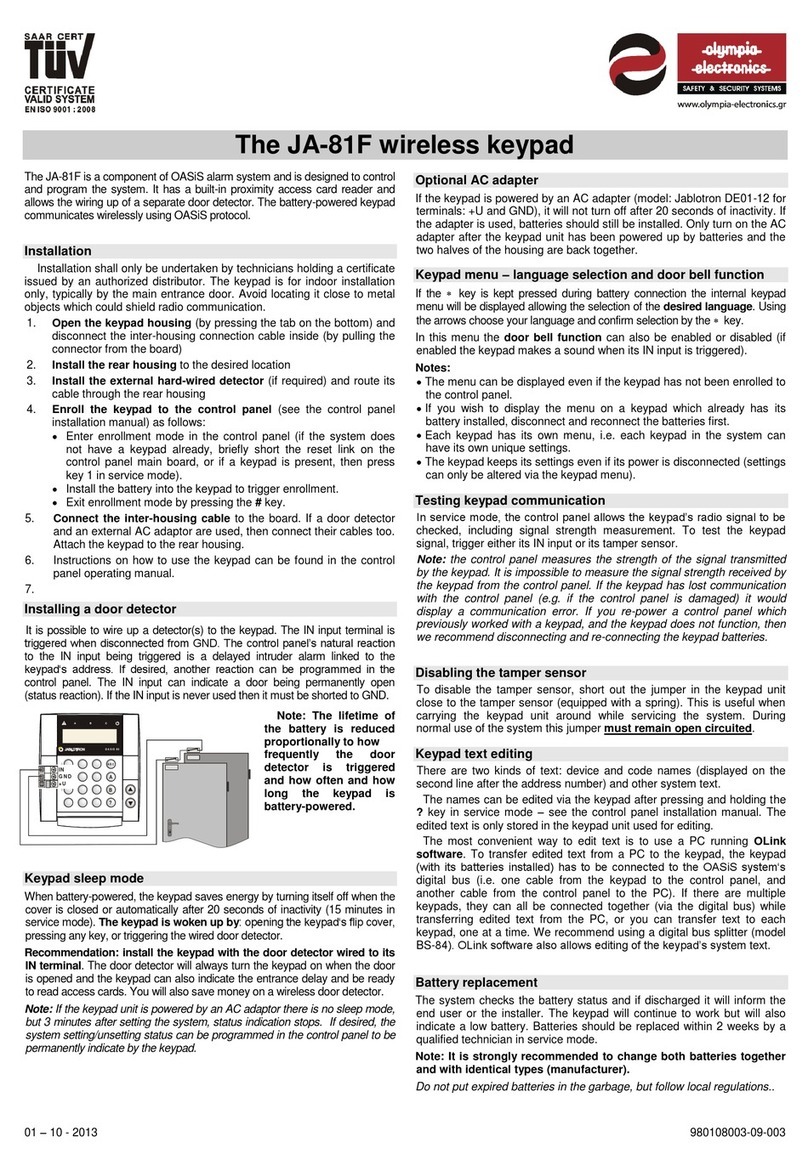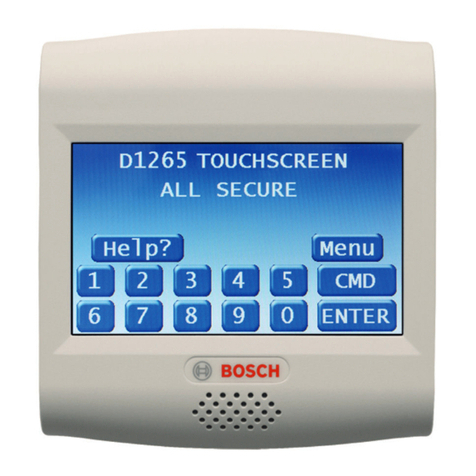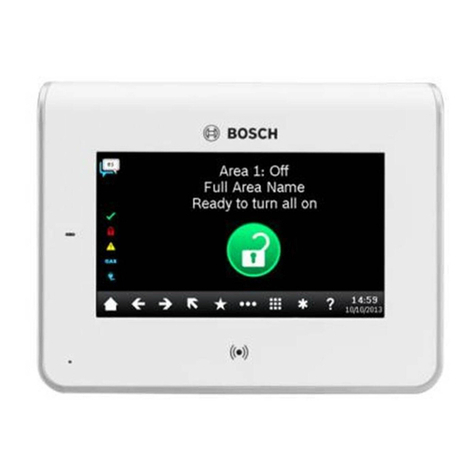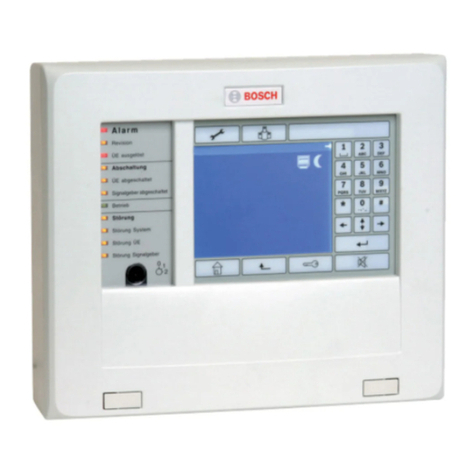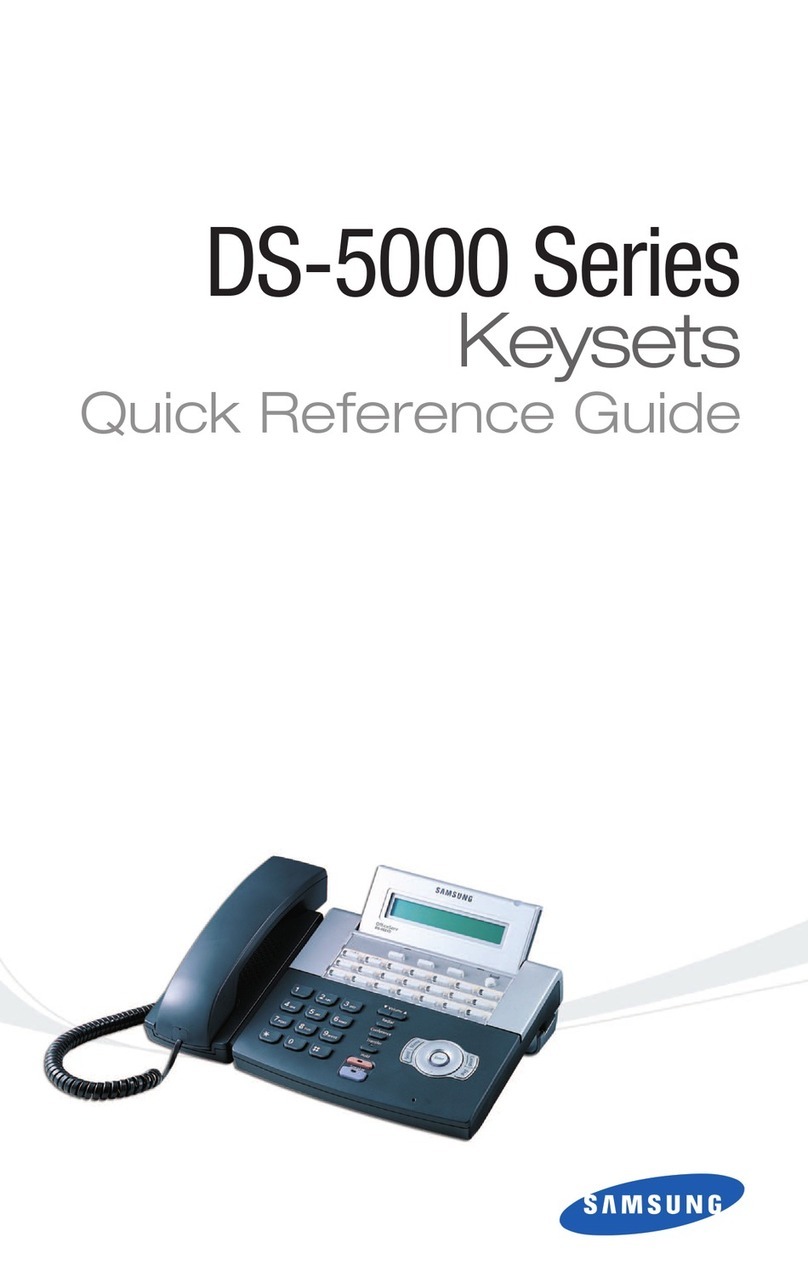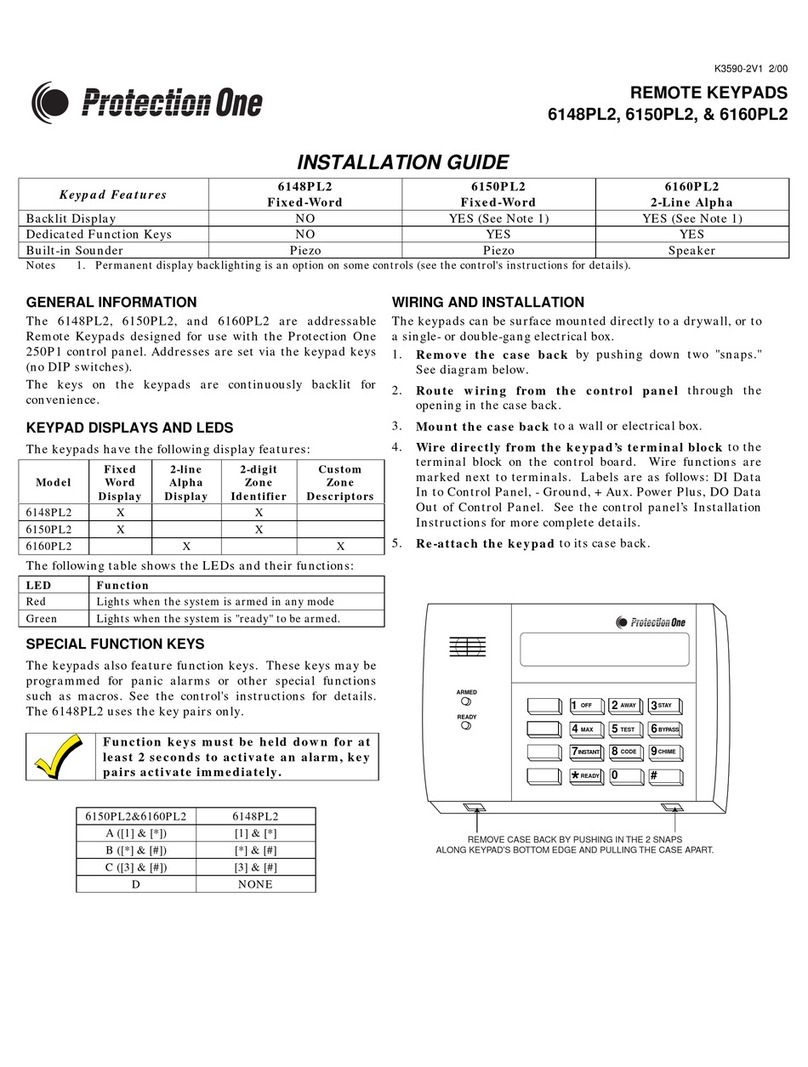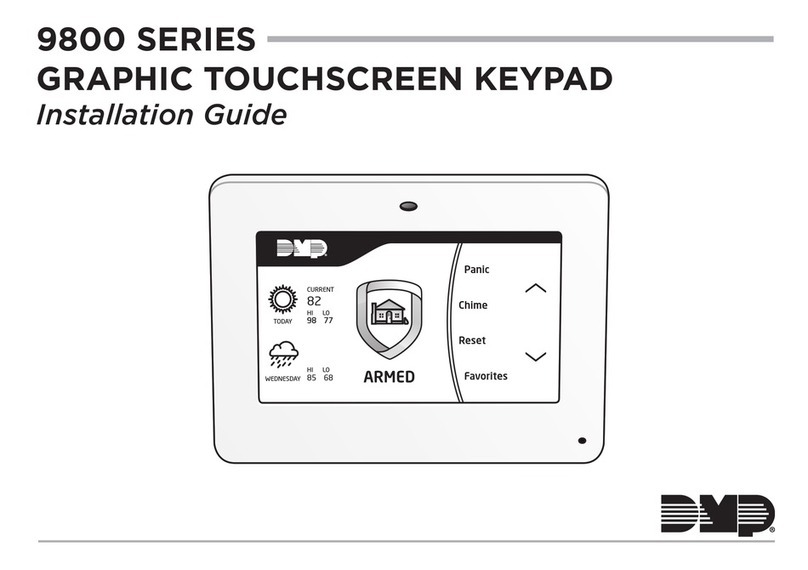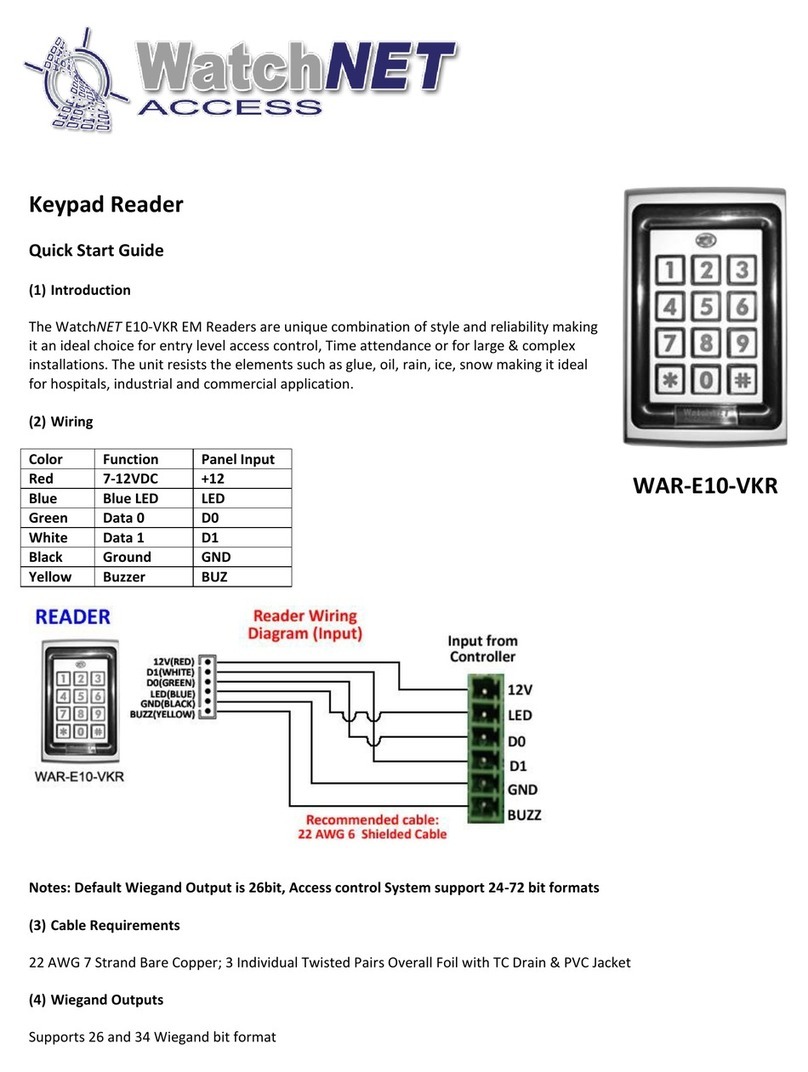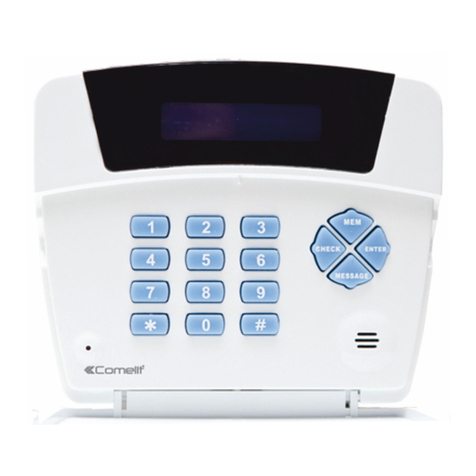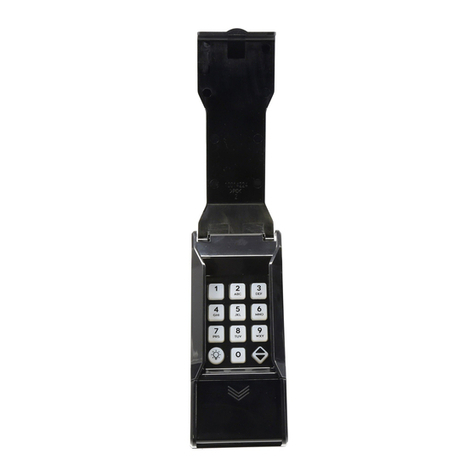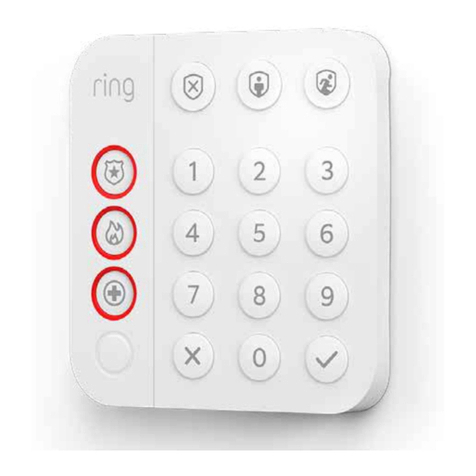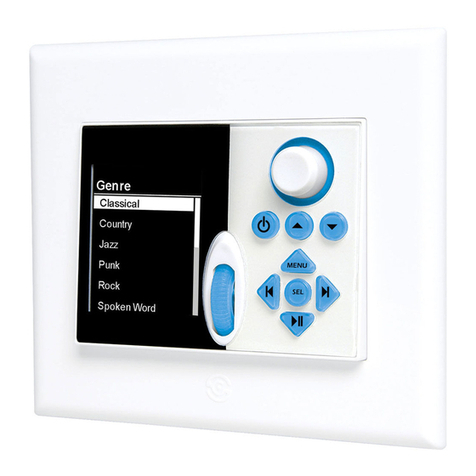8
Command Center Tones
Your command center emits one of several distinct tones to alert you to
system events. Additional bells or sirens may also be connected to your
system. Bells or sirens mounted on the exterior of your premises alert
neighbors to emergencies and provide an audible guide for police and fire
fighters. Some of these tones are optional, and can be selected by your
alarm technician.
1. Fire Alarms: Fire alarms are the highest priority events. When a fire
point activates, your command center emits a fast, pulsating,
high-pitched tone. Evacuate all occupants and investigate for smoke or
tire. Ensure that all occupants know the difference between the
burglary tone and the tire tone. The tone sounds for the time set by
your security company. The command center point status LEDs will
show the tire points in alarm. Note: Some points, such as tire points,
may be programmed so that the sounder cannot be silenced until the
point fault is corrected.
2. Burglary Alarms: Burglary alarms are the second priority. When a
burglary point activates while your system is armed, your command
center emits a pulsating burglary tone. The tone sounds for the time
set by your security company. The command center point status LEDs
will show the burglary points in alarm.
3. System Trouble Events: When a system component is not functioning
properly, your command center may be programmed to emit three
warble tones, then a pause (repeatedly). If the problem is with a point,
then the point status light indicates which point is faulted. To silence
the system trouble tone, enter COMMAND 4 or your personal pass-
code followed by ENT.
4. Entry Delay Tone: When you enter the premises through a point
programmed for entry delay, the command center emits a repeating
tweedle tone to remind you to turn off your system.
Exit Delay Tone: After you arm your system, the command center
emits a repeating beep tone and counts down the exit delay time. If
you don’t exit before the delay time expires, and an exit delay door is
faulted, entry delay will begin.
5. Keystroke Checking Tones: Pressing any key on the Command Center
sounds a short beep tone. When you press an incorrect key, a flat buzz
tone sounds to indicate an invalid entry.
6. Faulted Point: When you enter an arming command, and a point is
faulted, the sounder is activated for two seconds. The point status
indicator associated with the faulted point is lighted.
7. Watch Tone: When the Watch Mode is activated, the Command Center
emits a brief tone to alert you when any watch point is faulted and the
point indicator lights to indicate which point is faulted. The tone sounds
only when the door or window is opened. It does not sound again for
that point until the door or window is closed and then reopened.
Some system trouble events can produce a trouble tone without
producing any status light indications. These trouble events fall into three
categories:
1. Hardware, Software, or Wiring problems. This could mean, for
example, that a keypad had been unplugged from the command center
or that the printer has been unplugged. Call your security company.
2. Communication or Phone Failure. This could mean, for example, that
you have phone line trouble. Call your security company.
3. Late to Close Reminder Tone. If your system is programmed to send a
closing report, your command center will sound the trouble tone to
remind you that it is time to close. Arm your system to silence the tone.





















